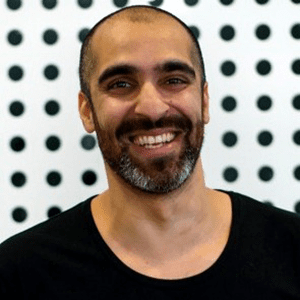

78: Systemise your business for success
The podcast features a conversation with David Jenyns, who became a systems devotee after systemising his own business successfully in 2016. He founded systemHUB and SYSTEMology with a mission to free business owners from the daily operations of their businesses. The discussion covers various aspects of systemising a business, the importance of repeatability, the impact on scalability, and how to get started with creating and implementing systems and processes.
David emphasises the value of falling in love with the idea of owning a systemised business and building up your systems muscle over time to achieve business growth and success.
8 tips to improved efficiency, scalability, and overall success in business:
- Systemise Your Business: Systemising your business can free you from daily operational tasks, allowing you to focus on more strategic aspects of your company.
- Identify Critical Systems: Start by identifying the critical few systems that have the biggest impact on your business’s success. These are the systems you should focus on first.
- Delegate and Repeat: Delegate tasks to lower-skilled team members, making them repeatable and standardized. This helps free up higher-skilled team members to work on more valuable tasks.
- Keep It Simple: Don’t overcomplicate your systems. Focus on creating systems that are simple, clear, and easy for your team to follow.
- Cultural Change: Changing the culture inside your organisation is a crucial part of systemisation. Teach your team the value of systems and processes and how they can lead to personal and professional growth.
- Fall in Love with Systemisation: Understand the importance of systemisation and commit to the process, even if you don’t particularly enjoy creating documentation. Focus on the benefits it brings to your business.
- Start Small and Build: Begin by identifying and systemizing just one or a few key processes. Building your “systems muscle” gradually will lead to long-term success.
- Celebrate System Wins: Recognise and celebrate small wins in systemisation during your weekly meetings. This reinforces the importance of systems within your company.
Stephanie: Welcome to TEC Live, Stephanie Christopher here, CEO of The Executive Connection. We connect leaders with a trusted network of people who help them succeed.
Leah: Stephanie, I definitely need more time in my day, so if I want to create time and stop wasting the time that I do have making errors, is there someone you can talk to about that?
Stephanie: Funny you should say that, Leah. There is indeed.
David: The right place.
Stephanie: And when you’re talking about reducing your errors, somehow it feels like your hockey finals coming up.
Leah: They’re coming up. Coming up.
Stephanie: As a state champion, I know that you’ve made very few errors recently, but let’s get to our wonderful guest today. We have David Jenyns with us on TEC Live. And so David has a really interesting beginning to his entrepreneurial journey. He began in his early twenties when he sold Australia’s most beloved sporting venue, the MCG, and we’ll get to that in a minute. It sounds like a dodgy person on the street saying, ‘Do you want to buy the Opera House?’ Since then, David’s business experience has spanned from franchising retail clothing stores to founding one of Australia’s most trusted digital agencies, Melbourne SEO Services.
So in 2016, David successfully systemized himself out of his business and through this process, he became a systems devotee, founding systemHUB and SYSTEMology. Today, his mission is to free all business owners worldwide from their daily operations of running their business. I’m in. It sounds great. David Jenyns, welcome to TEC Live.
David: It’s a pleasure to be here and looking forward to this.
Stephanie: Good. Well, that’s good. Let’s start with the MCG. How did you sell this icon? Tell us about what happened.
David: I read a book about a guy who sold the Brooklyn Bridge. His name was Paul Hartunian, and he saw they were doing some renovations on the bridge and got his hands on a lot of the discarded wood. And I just read this story. I was driving past the MCG and they were doing some renovations on the Ponsford Stand. It was like fireworks went off in my brain and I thought, ‘I could do exactly what this story did here in Melbourne.’ And I got my hands on the old green wooden seating and some MCC crested carpet and just a lot of the things that they’d pulled out from the members’ stand. And just like you said, I chopped it up into little pieces and was effectively selling it on a street corner.
Stephanie: You’re kidding.
David: I wrote a press release, ‘Melbourne man sells the MCG for 24.95.’ And I got picked up on Nova Radio and was in the Herald Sun and lots of different magazines picked it up and yeah, that was kind of the introduction to my entrepreneurial life.
Stephanie: What a great story. I love that story. How did you get your hands on it? Did you just go to the contractors and say, ‘Can I have that stuff you don’t need?’
David: So it was wheeling the wreckers back in the day and I went to this big, dusty, old warehouse and they just had rolls of this carpet that they’d taken from the members’ stand just getting dusty in this big, old warehouse and big piles of wood. And I went down there with my dad and loaded up the back of his van as much as I could, squished it all in and I said, ‘Oh, be back later in the week to get the rest of it.’ And they were just going to recycle it. So I think the carpet was going to get thrown out. The wood, they were planning on machining down and then just recycling that wood. And obviously everybody loves the MCG here in Australia, it’s almost like a religious icon for sport. So I thought this is going to be a huge opportunity. And once that press release went out, it pretty much didn’t stop for a good few months where I just had people contacting me, outreaching and it was a wild journey, that’s for sure.
Stephanie: What a great story. So let’s move on now to the premise. There are so many business owners listening to this and indeed hired CEOs, not talking about myself, who find themselves too much in the business, not on the business. Tell me what that does to an individual and what does it do to their business?
David: Definitely for the business owner, over time, once you get stuck in that rut where you’re very much the bottleneck and it feels like you’re on a treadmill, it starts to drain your entrepreneurial life force because you’re just solving the same problems over and over and over again and you’re repeating yourself to clients and to staff to do this and do that. And where a business owner does some of their best magic is when they’re thinking big picture, when they’re finding problems out there in the world and going out and solving them. And business owners are really great at problem solving. It’s one of their key skills, but where they lose that energy is where they keep solving the same thing over and over and over again.
And oftentimes for the business, they’ll grow the business to a certain size and it’s almost like you reach this invisible ceiling because you’re typically heavily dependent on some key team members. And if that team member doesn’t come into business or they’re sick or need some time off, that thing that they do just doesn’t get done and it waits until they come back. And that causes some really big challenges as you start to grow and scale. And as we talk through it now, it makes it really obvious why you hit that plateau because you’re so key person dependent.
Stephanie: That’s so interesting, isn’t it? Because it’s a challenge for businesses that plateau and I’m hearing you saying it’s a relatively simple solution for what seems like such a wicked problem, and one of them is that whole thing about having the right people on your team and what you’re getting them to do. Is that right?
David: Yeah, a big part of systems and processes and the work that I do is identifying the essential tasks that are delegatable and repeatable. So in business, on a day-to-day, there are certain things that just need to happen. You will need to follow up that incoming inquiry when it comes in, you’re going to have to onboard a new client when they’re getting started, you have to issue out an invoice. There are certain things that there aren’t any particular magic that a team member is bringing to that particular task. And the real key is to identify what those tasks are, codify how it’s done. It’s not even about making it world-class, it’s just figuring out who on your team currently does that task to a great standard and bringing everybody up to that standard because most small business struggles with repeatability and they have trouble making sure that something happens consistently. And probably-
Stephanie: Tell me more about that actually, David, that struggling with repeatability and consistency? Talk about that a little bit.
David: Well, often times, it’s not about being the very best or world-class at something. You look at McDonald’s for example. McDonald’s doesn’t make the best hamburger. They just do it consistently. And your clients and prospects, they come to depend on that repeatability, and that’s why they go to McDonald’s. If you can build that same level of repeatability in your business where your clients can come to rely on you and expect a particular outcome or way of engaging with you, it makes it so much easier for them to keep coming back and to refer people because they know what the person’s going to get.
Stephanie: And so you were saying that small businesses really struggle with that, and is that because you’ve got a relatively small number of people doing everything and they can’t stay on top of that bit because they’re being pulled into all sorts of other things as well?
David: Yeah, there’s definitely a few different parts of it depending on the size of the team. Definitely the knowledge is oftentimes trapped in the heads of a handful of key team members. And if that team member isn’t able to do that task, it doesn’t get done or someone else steps in to do that task and they do it a little bit differently, sometimes… I remember working with a client that runs an immigration company, absolute immigration, and we’re doing some work with him. And when this became obvious for him was when he had three of his key frontline team members all take leave at the same time because they all got sick.
He got pulled in and then realised that each one of those team members was doing something just a little bit different, which meant every time a client came on board, whoever they spoke to, they would get one experience and then they’d come next time and then work with another team member and it would feel like they were working with a different company because they were doing little, small changes. And then that’s when he realised, hey, there are certain things that do need to be standardized.
Stephanie: Are they always small operational things that need to be standardized or can there be more things higher up the value chain that you can standardize as well in a business?
David: Oftentimes the easiest place to get started, if we think about business as this idea of passing down and delegating tasks to lower skilled team members and oftentimes maybe more junior or not as expensive labor, the more that we can pass those types of tasks down to free up your higher skilled team members to work on the highest value tasks that only they can do that might be the exceptions. So often systems and processes are great at handling the vanilla version, and that’s also a reason where a lot of people head off the beaten track when they create systems and it can become overwhelming because at first someone thinks I need to create a system that captures every possible scenario. When oftentimes you’re better off creating a system that just captures the most probable, and you use that as a training ground for those new team members.
And when exceptions and variations pop up, that just would get elevated to more senior team members and it’s a chance to teach those more junior team members, ah, great, well, this is what we do in those scenarios and a decision can be made. Do we roll that insight into the system to get it for next time or is that something that is better suited to a higher skilled team member?
Stephanie: I really like that. I think that’s just really landed very well with me. Make it a simple system, train your frontline team on a simple repeatable system and get them really good at that. And then the outer protocol events that happen, you’re going to learn from and think, how will I integrate that into the system going forward?
David: And if we keep following that line of thinking, that idea of keeping it simple, because really at the heart of SYSTEMology and the work that I do. When someone first gets started, one of the first questions they ask is, ‘Well, what are the first systems that I should create?’
Stephanie: Yeah.
David: That always bubbles up for someone. And one idea is that just because you don’t systemize something, doesn’t mean it’s going to magically stop happening in your business. Things are already still happening. So if we’re going to systemize anything, what we want to do is apply the 80/20. How do we find the critical few systems that produce the biggest result for the business and go to work on those?
So one of the exercises that we talk about as we go through the SYSTEMology book, we call it the critical client flow, and it’s just about mapping the linear journey that the client and the prospect goes through to deliver a core product or service. So grabbing someone’s attention, handling the incoming inquiry, the sales process, the onboarding, the taking of some money, invoicing or whatever that looks like, the delivery of the core product or service, and then getting them to come back. Just visually mapping that to start and using that as a starting point and asking where in that process is the pain. And oftentimes, you can go, ‘Ooh, if we had a hundred more clients like this, I know this part of the system would break or we wouldn’t be able to sell or wouldn’t be able to onboard or deliver,’ or whatever it is. Great, well let’s go to work on that.
But that’s a great tool to think through to answer that question. And it comes back to, like you said, keeping it simple. What are the first 10 to 15 systems you start with and how do we just capture the most probable and keep it very simple?
Stephanie: So what I’m hearing, and it’s interesting because it’s kind of counterintuitive to what we hear from innovation experts, agile customer experience people who are saying map out the journey from the customer’s perspective. Am I right in hearing this is mapping it out from an internal perspective? Is that a difference here?
David: Almost a combination of both in that when you go through that exercise, you first identify who the target audience is because you do want to optimise to a certain situation and make sure that that target client has a great experience. And we also want to identify just a core product or service. We don’t do everything to start with, we just start off with one and we look at the client’s journey, but also the business’s journey. So it’s a little bit of a combination of both, thinking about how can we make sure that that client has the best experience and what do we go through. But you did touch on something there around this idea of lean and agile and something like that.
The difference with SYSTEMology and what makes it a unique approach is a lot of those methods, they’re process improvement methods. And just in the name, that pre assumes you have a process to improve, SYSTEMology is the step before that. SYSTEMology is process capture. It’s, what are you currently doing? What is the current best practice? Let’s bring everybody up to that standard, consider that the baseline. And we do that because a lot of small businesses, they struggle with repeatability. Let’s at least solve the repeatability, then we can come back and optimise later. But you can’t improve a process until you first identify what the process is.
Stephanie: I love that. I think that’s a missing link because you write with those ideas, lean or whatever, but the idea is, well, what’s ideal? Let’s map out what is, but often in the mapping out what is, there’s kind of, well, we do X, but maybe we don’t.
David: Yeah. And the business owner is oftentimes the worst person in the business to be creating the documentation for the reason that you just identified, which is the business owner can’t help themselves but go into the future and craft a system the way that they would like things to be. And they say, ‘Oh, we’re not using this software yet, but let’s write it in because I want to do that. Oh, let’s add this step in and that step in.’ And before you know it, we’ve got this big bloated system of things that we would like to be doing. And it gets in the way of getting it done and also forces the business owner then to be that bottleneck again, because now they’re the visionary creating and doing all of this stuff when oftentimes the biggest wins come from just making what’s already working repeatable.
Stephanie: So good. It’s hard for me not to put my sales hat on here. This is perfect for sales, isn’t it? For a sales team.
David: Like you wouldn’t believe.
Stephanie: Have a simple sales process, and if something’s out of protocol, deal with that, but just have a simple sales protocol.
David: And it’s that whole idea of find out whom on your team is already doing it really well. So if you have a great salesperson, find out what they’re saying on the phone, what does their follow-up process look like and just capture that because if you brought everybody up to that standard and you did it consistently, you’d smash it out of the park. Not only that, it makes it infinitely easier to work with consultants and third parties because when someone comes in, if you can say to them, ‘Well, this is how we’re currently doing it, here is our metrics and we all follow this process,’ it’s so much easier for the consultant to go, ‘Ooh, well, let’s now start to re-engineer the process.’
Stephanie: Yeah, let’s start tweaking and having fun. But if you’re trying to identify a process, create a process and improve a process and upskill and turn the table all at once, I have to think… It’s not just business owners here, David, this is a… I’m having some wonderful aha moments in this conversation. I think it’s really helpful.
So when you go into a business, you said that you’ll start by saying, what are the repeatable things that you have to do? And then you map, you said you do it an internet and map of you have to do this stuff to get paid ultimately. It’s what are all the things you have to do to get paid.
David: 100%. And that right there-
Stephanie: I’ve just got a thumbs up everyone. You can’t see this. I’ve got an A okay, thumbs up.
David: That’s right. The insight there is we start with making sure that we remove key person dependency on the business making money.
Stephanie: Yeah.
David: Because almost every other problem in business can be solved with money and cash flow. So we first make sure that the business gets that throughput and we’re not dependent on anyone because we can hire a consultant and do this and solve that problem, and we just need somewhere to focus, what are the first 10 to 15 systems? Later on, we can think about, well, what are our recruiting systems and our onboarding systems and some more finance systems and HR systems and management related systems. There’s tons of different systems that we can focus on, but it’s narrowing it down to the 80/20. How does the business make money? Let’s start there. And then you can go that step further, which is where in that process is the pain? What is the bottleneck that we might be able to unlock? And a few of those key ideas around delegating down to lower cost team members and less skilled team members to free up the highest skilled, most valued team members to work on things only they can work on.
When you piece all of that together and you do this over a period of time, there’s a point which you reach. It’s almost like a turning point. It’s that inflection point, the breakout point where your business really starts to take off like a rocket. And I’ve seen it so many times before. The first few systems have very little impact, but these are all one percenters that just keep adding up. And then you get the benefit of the compound growth of all of these systems. We’ll get to a point where then we significantly increase capacity. We’ve reduced the errors that are happening in the business because people are properly trained, which then obviously impacts our bottom line and makes us much, much more scalable.
Stephanie: People are happier too, aren’t they? Employees are happier because they know what they’re supposed to do and they know what their role is and what their manager’s role is and what the big boss’s role is, and so they know who to go to for what.
David: And it’s a little bit counterintuitive oftentimes for the business owner because the business owner sometimes might not see themselves as a systems or a process type person and they think, ‘Oh, well, I wouldn’t follow the process, which means my staff wouldn’t like following the process.’ But like you said, oftentimes, A players, people who want to do really well in your organisation love to know how to win the game. And a good system and process that outlines, this is what we do, this is what success looks like. You do this and you’re going to go really far in the business. And not over-engineering the system. That’s another area where people go wrong. There’s this preconceived notion that we should systemize like McDonald’s.
And McDonald’s, one, they’re in the hamburger business. Two, their goal is to get a 15-year-old kid off the street and over the course of a weekend having them making hamburgers. Yet a lot of businesses, we’re not in the hamburger business and we might recruit very skilled team members who know how to do a lot of things. So we don’t necessarily need to tell them how to suck eggs. We want to give them enough of a framework and what they need without adding in extra red tape or over explaining something. So having these different levels of detail on systems and how things are explained, it’s really important dependent on the role. So when you get that right, we don’t want to turn our people into robots.
Stephanie: No. No.
David: We actually want to empower them and create space and show them how they can win and create a culture that just keeps falling back to the systems and systems improvement.
Stephanie: That’s really good, really good. What are some stories of some wins that you’ve seen with business owners who have done this?
David: We had one that always comes to mind, diggiddydoggydaycare, and she, Jeanette Farren and her sister ran a doggy daycare business down here in Melbourne, and they’d been going at it for about 10 years. And towards the end of that, they decided, ‘Look, we’ve had enough, we’re thinking about exiting.’ And they came across SYSTEMology and started to think about the exit. They started to systemize themselves out of the day-to-day and they got to the point where the operations were fully firing and they got all of their core systems and processes down and Jeanette and her sister were able to step in and out. And then they got, as part of that process, improving the financial performance. And they then got word out that they were looking to sell.
And the person that acquired it was actually Petstock, which is the Australian listed company. And they spotted diggiddydoggydaycare and said, ‘Ooh, we see this store as a franchise prototype that we are purchasing.’ And they put a huge value and Jeanette and her sister get a really great multiple on exit, really great because they cited the systems as something that they could then take and then roll out. And they’ve already started basically rolling these stores out and attaching them to Petstock, the Petstock stores. And it started off by them just capturing what they were doing, removing themselves. And that really increases the value. Because when you think about it, a potential acquirer, a lot of them are concerned that when it comes time to sell or you’re changing hands, the key team members, if they walk out the door and they take all the knowledge and clients and stuff-
Stephanie: There’s no business.
David: … what are they buying? That’s right. Whereas the systems heavily de-risks that for them. So that was a little bit of a fairytale ending for Jeanette and her sister. They really did have a tremendous story, and it just went through that process of systemizing and making their business more valuable.
Stephanie: That’s really good. So a question, where does strategy fit in here? When you start working with a small business, do they have to have their vision or their BHAG or their strategy in place before the systems happen? Or do the systems just happen independent of strategy?
David: It’s definitely helpful to have some of those things in place like a visionary leader and leadership team that have an idea of the direction that they’re headed because that helps to form the why, why are we doing this? Because systemizing a business, it’s not natural. You won’t go to bed one day and wake up the next day and you’re systemized. It is a process that happens over time. You need to change the culture inside the organisation, and we need to get everybody involved. So having some of that thinking upfront definitely helps. That said though, as I said, tremendous wins can be gained purely by making your business repeatable
And your business, there’s a good chance if you’re listening to this right now, it’s already functioning. You have a team around you, you’ve already got clients, you’ve already got traction. So something must be working. And systems and processes, like I’m talking about here, is really just codifying what’s working to make it teachable so we can then pass that down the line. And again, this is part of that cultural change. Teaching the team to understand that to move up in your organisation, if you can systemize what you’re doing and pass it down to a less skilled team member, that frees you up to work on higher value tasks, which actually makes you more valuable to the company. And teaching the team those sorts of things in that frame is a big part of the work that we do as we start to change the culture in a company.
Stephanie: So you are hitting strategy one way or another because there’ll be a discussion about strategy, and your strategy might be we’re going to systemize the business. So you’re hitting that. You’re hitting leadership with the owner or the business leader, and you’re hitting individual kind of talent management as well, aren’t you? As well as culture. Because in the rollout of this then, I’m hearing you’ve got an individual thinking, ‘If I do this well and I make sure I’m codifying at all times what I’m doing, then I can see opportunities for where I could pass that on and move up into whatever my ambition is in the organisation.’
David: And it’s about meeting the team members at what’s most interesting and relevant to them. Now, the good thing is there has actually never been a better time in history to systemize than right now. Because of COVID, everybody, your team, they’re more accepting of change. It’s happening in their communities, it’s happening at home, it’s happening in work. So when you introduce this idea of, ‘Hey, we’re looking to systemize so that… ‘ And then we can then start to think about what’s relevant to the individual.
So somebody might want to work their way up in an organisation and that connects with them, other people might not, but you might be able to say to those people, ‘Hey, you know when you take some leave because you get sick with COVID or a family member gets sick with COVID and I keep following you up, I’m sending you texts and checking in, ‘oh, where’s this client up to? Oh, can you make a call? Look, I know you’re on holidays right now, but can you send that email for me?’ And you know what that feels like. I want to make sure when you take leave that we can have other team members step in and continue to move things along so that you can just have your time-out, focus on your family and being there in the moment. So when you come back, you can hit the ground running rather than what happens usually. You end up spending the next four weeks trying to catch up for the two days that you had off.’
Stephanie: And all the work you’re doing before you go.
David: Yeah.
Stephanie: Yeah, it’s great, David, really good. You’ve kind of answered this question, but let me ask it as we wrap up. Where does a business person start? Where does a business owner start when they’re hearing everything you’re saying, and yes, reading the book’s one, but where do they actually start today to make a difference?
David: The first thing that they need to do is fall in love with the idea of owning a systemized business. Don’t fall in love with the documentation. The truth is, I wrote the book, but I don’t even like doing documentation myself. I don’t like writing systems and processes, but as a business owner, I fell in love with what systems and processes can bring. Then once I connected with that, and then I realised that hey, all great businesses at some point in time have to have systems and processes down. This is a skill that you have to master if you want to grow and scale. Otherwise, you’ll hit that bottleneck that we talked about at the top of the show.
So falling in love with it because then you will commit to it and you’ll persist with it because it takes time, it takes effort. There is challenge, there is resistance. So you’ve got to really understand and get very clear on why this is important and you must do it. And then as we said, identify the first system you’re going to start with and go through that exercise that we talked about, find that first one, and start to build up your systems muscle. Because most people, a lot of business owners are effectively like a couch potato when it comes to systems. They’re just sitting on the couch, they’ve worked no muscle, and they’re not very strong at this.
We’ve got to get up, get into the gym. We need to start making little systems, recording little videos. We need to put sticky notes on our monitors saying, ‘Am I going to do this again? Let’s create a system.’ You need to put it as a meeting agenda on your weekly meeting to showcase and celebrate system wins. You’ve got to decide that you want to do it, and then you’ve got to get in the gym and just start doing little wins and building up that evidence that you own a systems driven business.
Stephanie: So fall in love with systems, find one system you’re going to start with and start building your system muscle. And then my other big takeaway is, and keep it simple. Make it simple and repeatable and worry about the rest of that after. The variations is a different problem to solve, but make it simple.
David, that was fantastic. Maybe I’m a little bit in love with systems now. If I thought at the beginning of this conversation, it would be so easy, I didn’t think it would be. It’s so straightforward. It’s a very simple message you have there. And David, thank you so much for joining us on TEC Live.
David: My pleasure.
Stephanie: Discover more about TEC at tec.com.au.



